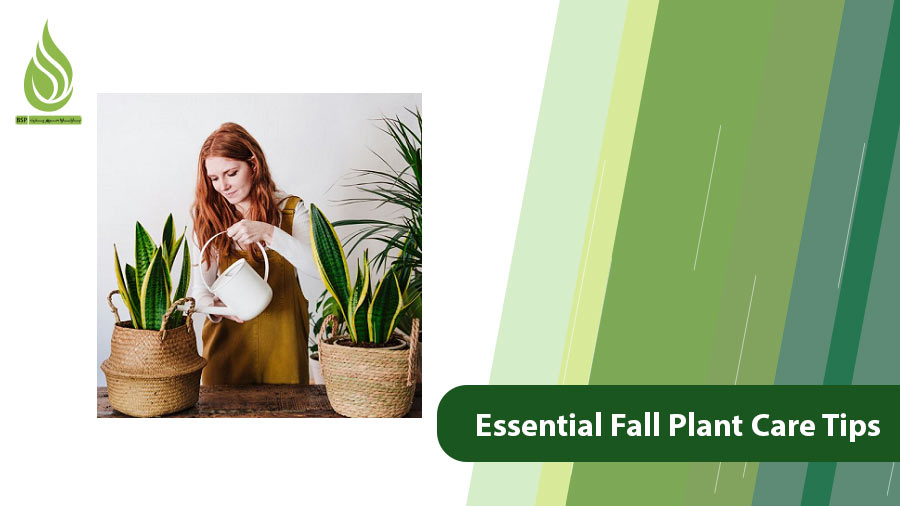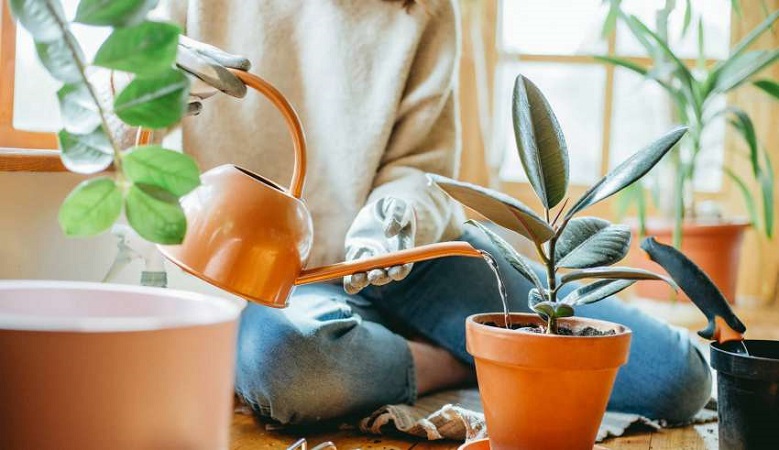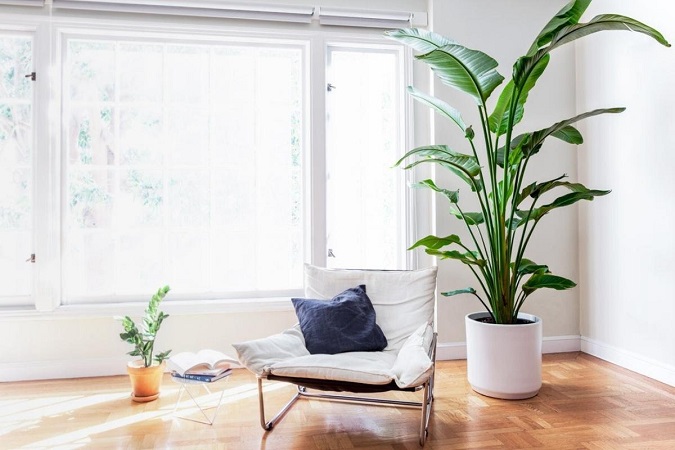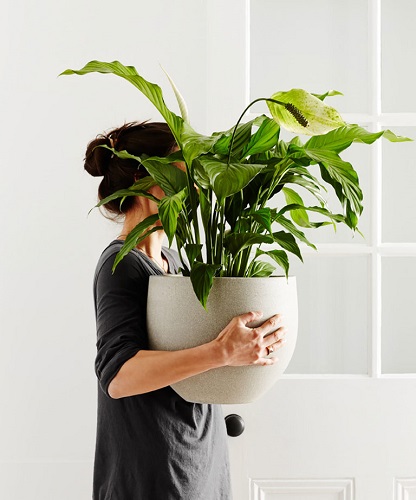
7 Essential Fall Plant Care Tips: Keep Your Greenery Thriving!
Unlike outdoor crops, houseplants don’t perish in the fall and winter months. But as the seasons shift, bringing shorter days and cooler weather, it’s time to adjust how we care for our indoor greenery. By following some fall plant care tips, you can help your plants thrive safely through the cold season. Neglecting this seasonal adjustment could result in issues like rot and plant damage. Let’s simplify your plant care routine for the upcoming chilly days, shall we?
In spring and summer, plants grow and multiply rapidly. However, as the fall season begins, plant growth slows down and may even stop in many cases, leading some to describe it as the “dormancy process” phase. Caring for plants during this time isn’t any more challenging than in other seasons; it simply requires a few key considerations. In this article, we’ll cover essential plant care tips for the fall and winter months, applicable to a variety of indoor plants like climbers, bonsai, pines, and more.
Plant Care Tips for Fall
Adjusting Watering for Winter
During the colder months, most plants require less water compared to the active growth periods in the first half of the year. With reduced light in fall and winter, the soil retains moisture for longer, and since plants are in a dormant state, their water needs decrease. Overwatering during this time can lead to root rot. Proper watering in fall and winter helps prevent fungal diseases and enhances the plant’s cold resistance.
To determine when to water your plants, insert a wooden skewer into the soil and wait a few moments. Upon removal, check the skewer’s moisture level. If the soil is completely dry, it’s time to water. Additionally, reduce the amount of water given to plants during the latter half of the year; in essence, refrain from overwatering.
If you struggle to gauge watering needs, seek advice from a knowledgeable individual on the ideal watering frequency for each plant. Keep track of watering schedules for individual plants by noting them down and affixing the information to their pots. By staying informed about the watering needs of each plant, you can ensure they receive the right care at the right time.

Avoid Fertilizing in Fall and Winter!
During fall and winter, the light and temperature conditions are not ideal for plant growth. Therefore, fertilizing during these seasons won’t benefit your plants much. As plants prepare for dormancy during this time, growth is minimal. For more delicate plants, it’s crucial to gradually reduce fertilization to prevent them from being shocked by the seasonal change. Start tapering off fertilization in late summer and discontinue it at the onset of fall.
The type of fertilizer you use in late summer is significant—it acts as the plant’s winter reserve, fortifying the plant’s structure rather than promoting growth. Strengthening the plant base now will ensure lush growth in the upcoming season. Consider using potassium fertilizer to help plants withstand the winter months. Avoid nitrogen and phosphorus fertilizers in late summer, as they stimulate plant and root growth, which is not beneficial during this period.
For Fall Plant Care Consider the Amount of Light They Receive
As fall sets in, nights lengthen and days shorten, resulting in a decrease in sunlight hours. To make up for this shortfall, position your plants to capture as much sunlight as possible. If your living space lacks natural light, incorporating artificial light near your plants becomes essential to ensure they receive adequate light.
An effective way to optimize light exposure for your plants is by placing them on a table near a window. This arrangement shields the plants from the chill outside while allowing them to bask in ample daylight. Inadequate light can cause plants to lean towards the light source, leading to uneven growth. To prevent this, rotate the plant occasionally so that all sides receive adequate light, promoting balanced growth and preventing deformities.

Avoid Repotting, Transplanting, and Soil Changes
It’s essential to refresh your potting soil with high-quality soil once or twice a year. The optimal times for repotting are early spring and late winter. If you notice that your plant has outgrown its current pot during this period, it’s time for a new pot. Alternatively, if your plant is suitable for propagation, consider planting some cuttings in a new container. These tasks are best tackled in the first half of the year to encourage vigorous new growth.
During fall and winter, plants enter a dormant phase, and disturbing their roots by changing soil or pots can disrupt their rest. Avoid unnecessary soil changes during these seasons to allow plants to transition smoothly into dormancy. However, if circumstances demand repotting, such as pot breakage or soil depletion, proceed with caution to minimize stress on the plant and ensure a gentle transition.
Maintaining Ideal Humidity for Fall Plant Care
During fall, air humidity typically decreases due to heating systems being in use, leading to dry and cold conditions that can affect plants. To preserve your plants’ vitality during fall, it’s crucial to ensure they receive adequate moisture. Avoid placing plants near radiators or vents, as these can accelerate soil and leaf dryness. If you reside in a cold, arid region, consider using a humidifier in the fall to benefit both your health and the well-being of your plants, creating a more humid environment in your home.
Another method to boost humidity is by misting your plants. Mist the leaves from a distance of 30-40 cm, providing them with a fine spray of water. This gentle misting can help maintain the moisture levels around the plant, especially in drier conditions. By adjusting humidity levels, you can help your plants thrive throughout the fall season.

Pruning Tips for Fall Plant Care
In the fall, it’s generally advisable to refrain from pruning your plants. The leaves of houseplants serve as a valuable nutrient source and play a crucial role in helping the plant adapt to winter conditions. They act as a natural barrier against sudden cold snaps, shielding the plant from frost and chilly weather. Thus, it’s best to hold off on pruning as fall approaches. For optimal results, reserve pruning for late winter and early spring, coinciding with the onset of the growing season.
By pruning leaves and branches early in the growing season, you can remove dead foliage and promote healthy growth. Since we typically aim to limit plant growth during fall and winter, pruning during these seasons is generally avoided. If pruning or taking cuttings becomes necessary, ensure the temperature ranges between 18-25 degrees Celsius for the plant’s well-being, steering clear of pruning during cold weather to prevent stress on the plant.
Maintaining Optimal Indoor Temperatures for Healthy Plants
Ensuring the right indoor temperature is key to keeping your plants thriving. While specific temperature preferences vary among plants, most will thrive and stay hydrated in the range of 18-24 degrees Celsius. Aim to maintain a consistent temperature range within your home, with a slight dip during nighttime being beneficial. However, there’s no need to fixate on this; as long as the temperature stays above 18 degrees Celsius and below 24 degrees Celsius, your plants should do well.
Position your plants in areas where the temperature remains stable, shielding them from fluctuations outside. If you typically keep plants on your terrace, it’s time to relocate them indoors to a suitable space. Remember, cold temperatures can dry out plants, while excessively high temperatures are equally harmful. Avoid placing plants near fireplaces or heaters to prevent temperature stress.
Plants that thrive in cooler environments and are cold-resistant, like cacti, require less water. This translates to reduced watering needs for these plants during the fall and winter seasons. By adjusting your watering schedule based on temperature requirements, you can ensure your plants remain healthy and well-hydrated throughout the colder months.

Additional Plant Care Tips for Fall
Here are some essential tips for looking after your plants during the fall season:
- Fungicide Application: Plants are more vulnerable to diseases in the fall, so applying fungicides towards the end of summer before they enter their dormant phase can help protect them.
- Adjust Watering: Plants exposed to lower temperatures require less water, so be cautious not to overwater them during the winter months.
- Outdoor Plant Care: Outdoor plants may appear dry in winter, but their roots are still alive. As spring approaches, these plants will begin to grow anew after their winter dormancy.
- Pest Control: Promptly eliminate any insects you spot around your plants to prevent infestations.
- Dust Removal: Dust can clog a plant’s pores, hindering its ability to absorb light. Given the elevated dust levels in the latter half of the year due to dry air, make a habit of gently cleaning your plants with a soft cloth or damp sponge to ensure they can photosynthesize effectively.
- Optimal Placement: Position your plants near a window for adequate light exposure, but avoid placing them directly on the windowsill. Instead, place them on a table near the window to enhance light absorption.
- Seasonal Leaf Loss: It’s normal for plants to shed leaves in fall and winter due to reduced light and nutrient availability. New leaves will sprout come spring but monitor leaf loss to ensure it’s within a normal range and not a sign of disease.
By following these tips, you can help your plants thrive throughout the fall and winter seasons.
